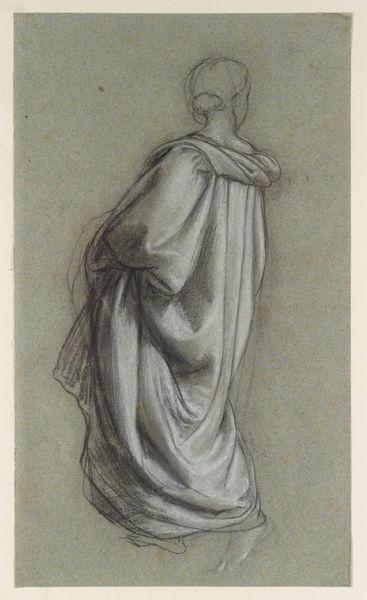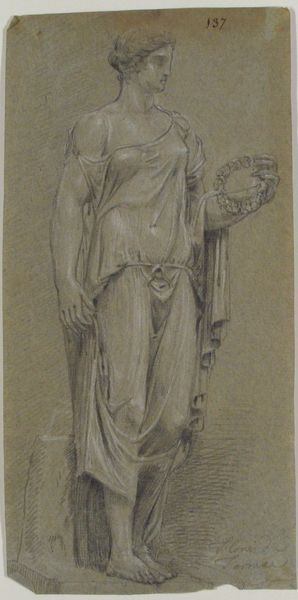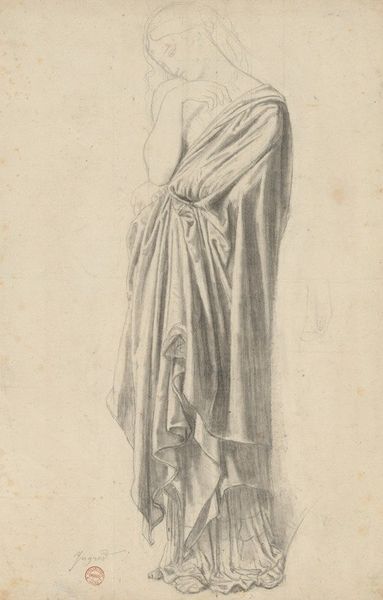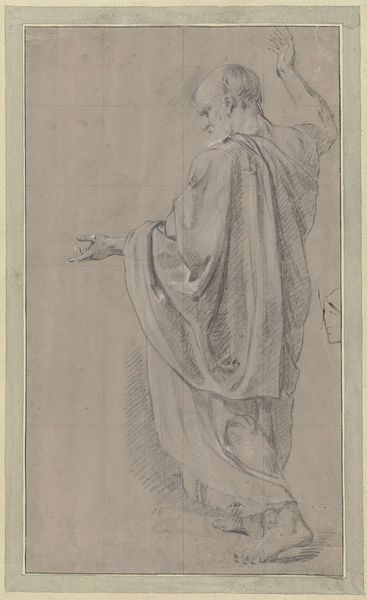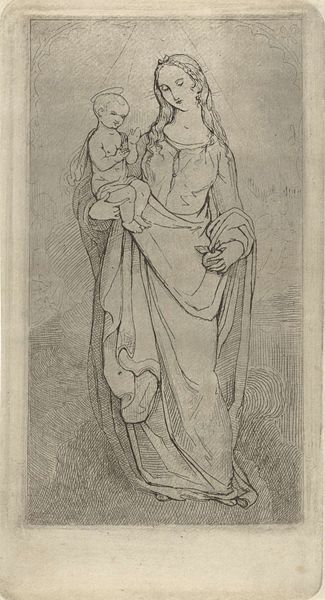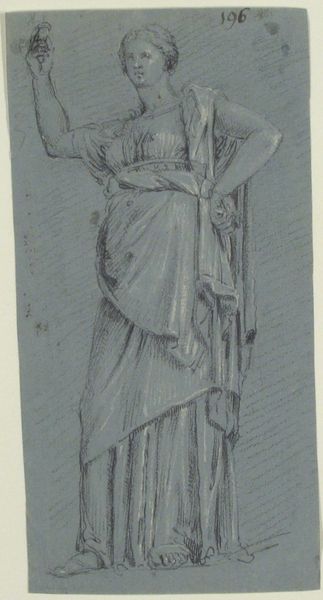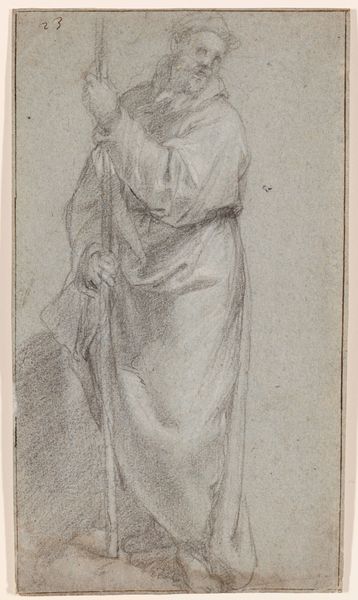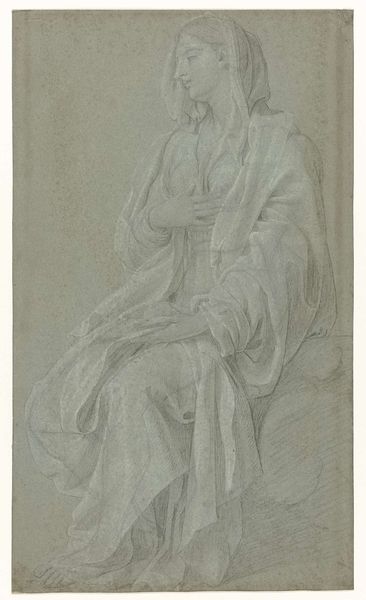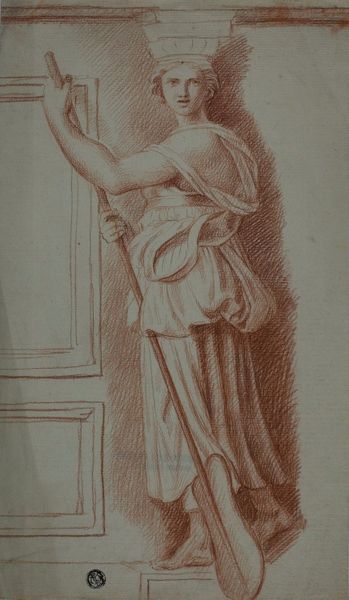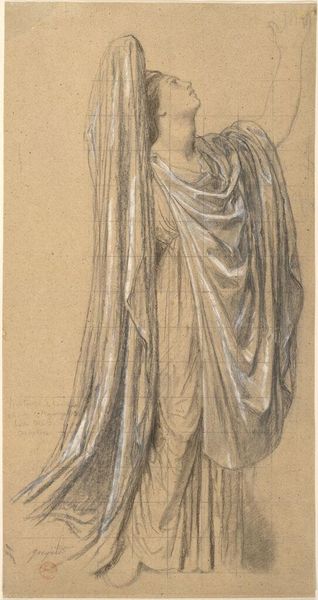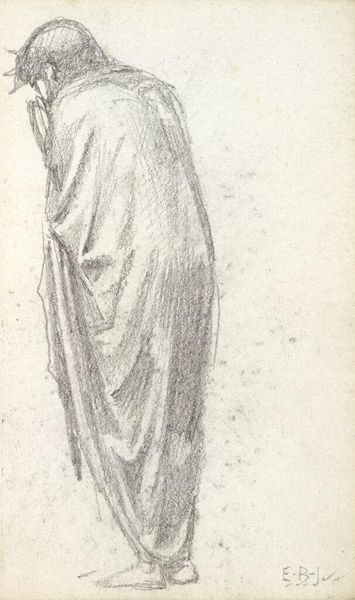
drawing, print, paper, sculpture, pencil
#
portrait
#
pencil drawn
#
drawing
# print
#
pencil sketch
#
classical-realism
#
figuration
#
paper
#
form
#
pencil drawing
#
sculpture
#
pencil
#
line
#
pencil work
#
history-painting
#
academic-art
Dimensions: sheet: 10 5/8 x 4 5/8 in. (27 x 11.7 cm)
Copyright: Public Domain
Curator: Here we have "Drawing of Female Statue," an 18th-century work by an anonymous artist. It currently resides in the Metropolitan Museum of Art. Editor: My first thought is how ephemeral this drawing feels. The soft pencil lines against the paper give it an ethereal quality. You almost expect the figure to fade away. Curator: Interesting. The use of pencil and paper reflects a direct connection to the means of artistic production at the time. Think of the artist, sketching, perhaps in preparation for a larger work, capturing form with these readily available materials. Editor: That's true. You can really sense the hand of the artist, but I am intrigued by what this work suggests about the history of collecting. Drawings of statues, for whom were these made? Were they studies to guide later works or souvenir for a rising middle class who had limited opportunities for grand travel? Curator: A key question. Pencil as a medium offers unique access to the classical aesthetic and its subsequent appropriation. This pencil print reflects an 18th-century sensibility for history painting, combined with accessible materials like paper and pencil. Editor: I can certainly agree about accessibility. Pencil drawings became very fashionable as artistic academies arose to the benefit of drawing masters and art suppliers everywhere. How interesting, isn’t it? that the pencil strokes emphasize classical form but were likely influenced by commerce as well! Curator: Precisely! And the level of skill involved indicates formal training, raising questions about the role of academic art in disseminating classical ideals and, simultaneously, commodifying artistic skills. Editor: Well, I appreciate seeing how readily-available material shapes perception. The context and mode of its consumption is equally informative as the artist’s vision. Curator: Agreed, it shows us that artistic skill and social context constantly shape what we value as beautiful.
Comments
No comments
Be the first to comment and join the conversation on the ultimate creative platform.
